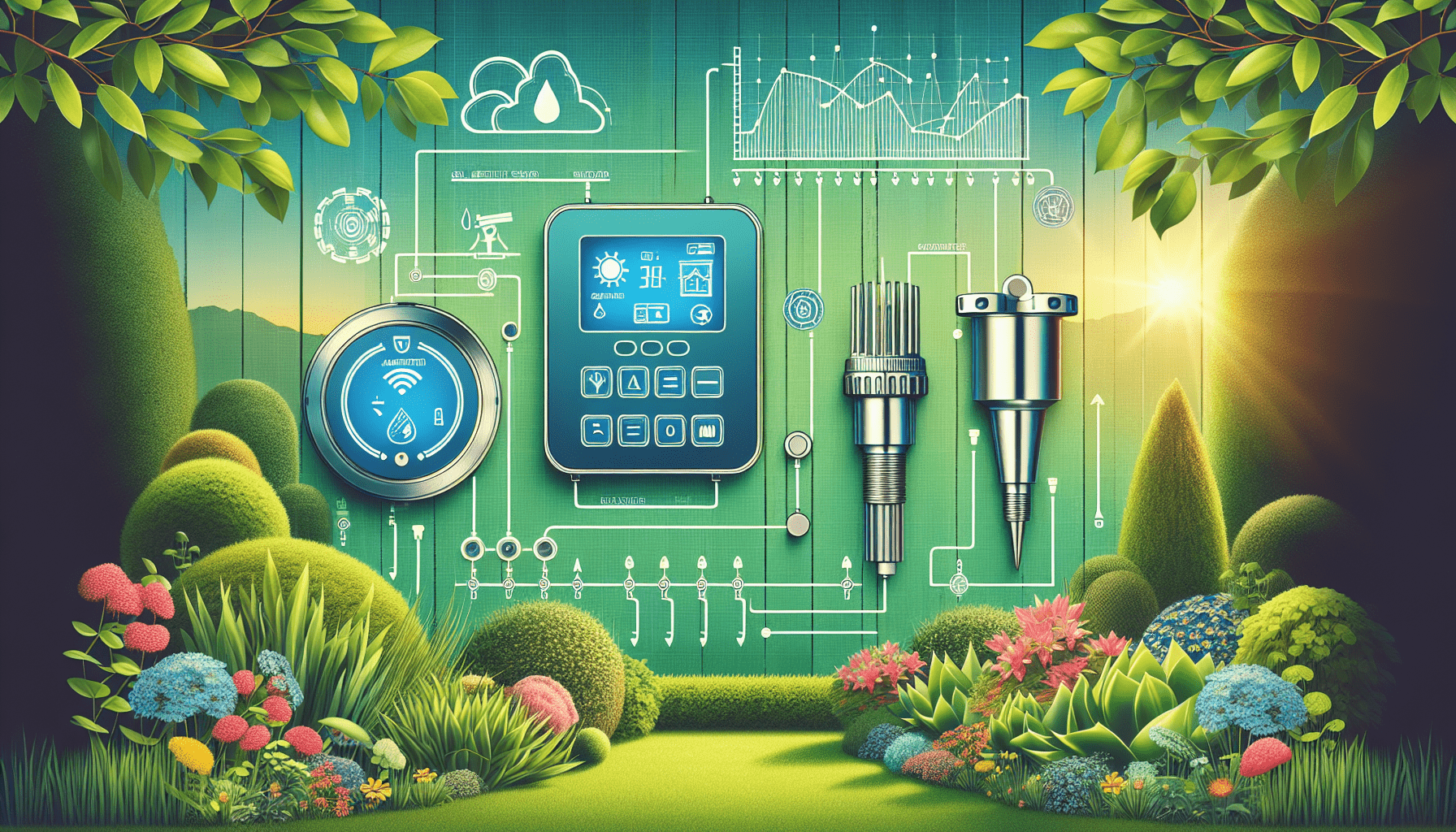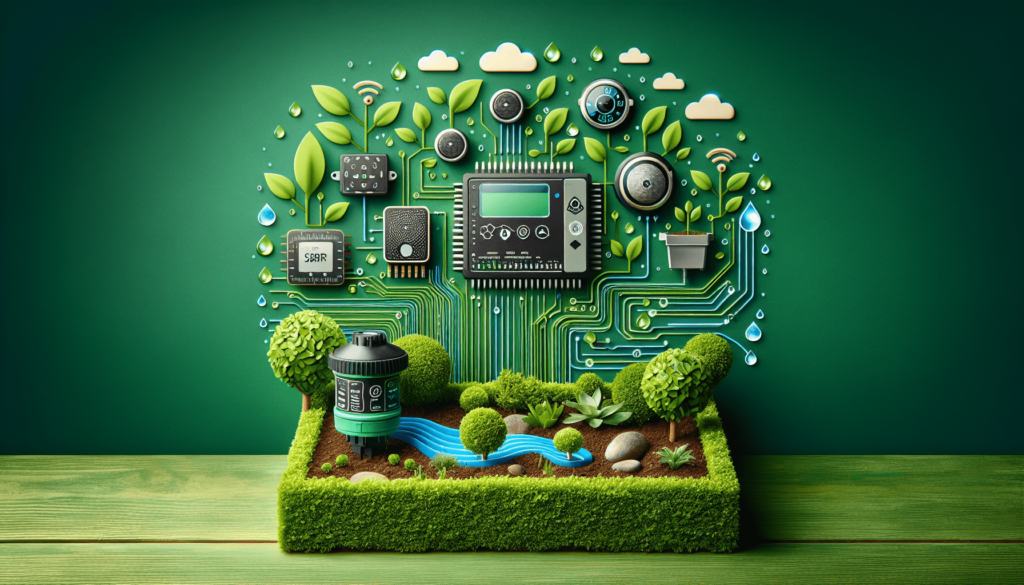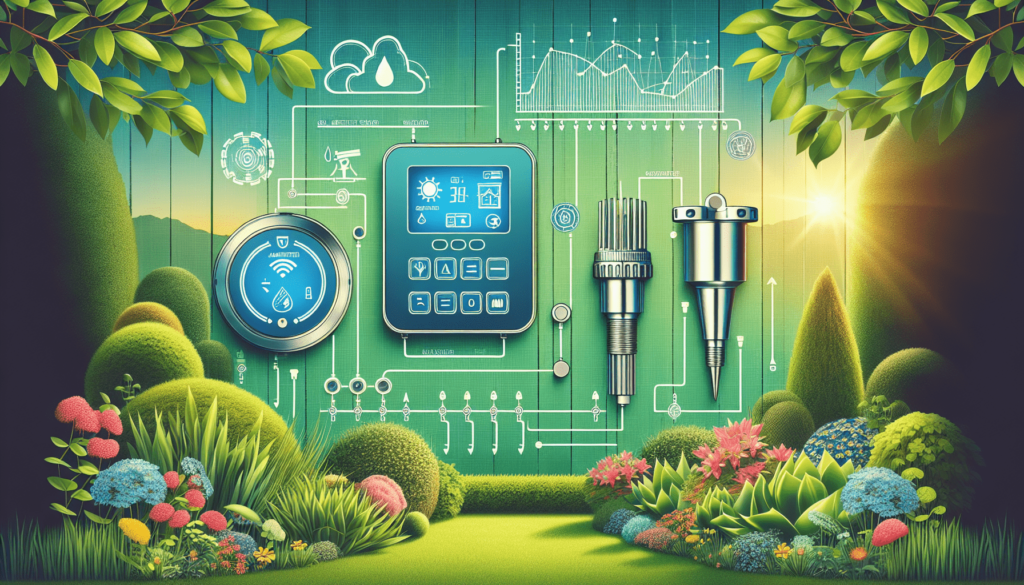
Brace yourself to journey through the realm of smart irrigation, as we navigate together the critical components needed to streamline your gardening endeavors. The article “Essential Components: What Do I Need For A Smart Irrigation System?” is loaded with helpful nuggets of wisdom, from identifying vital elements to understanding their roles in creating a top-notch irrigation system. Engaging your keen interest, it unfolds the mysteries that surround the technological world of smart irrigation systems and guides you towards scripting your very own green success story.

Understanding Smart Irrigation
Over the years, innovations in technology have increasingly found their way into every aspect of our lives, including lawn and garden care. One of the most beneficial applications of technology is the development of smart irrigation systems.
Definition of Smart Irrigation
Smart irrigation is an innovative approach to watering that uses technology to measure and respond to real-time conditions in your landscape. It uses data from sensors and local weather forecasts to ensure your lawn, garden, or agricultural fields receive the right amount of water at the right time. This eliminates the guesswork in irrigation and replaces it with precision and efficiency.
Importance of Smart Irrigation
Smart irrigation brings significant benefits to your lawn and your wallet. It promotes the growth of healthier plants by providing the right amount of water when it’s needed, reducing waste, and saving money. By using smart irrigation, you’re also helping to protect our precious water resources by reducing unnecessary water consumption.
The workings of a Smart Irrigation System
A smart irrigation system uses sensors and controllers to manage and monitor your watering schedule. The sensors measure factors such as soil moisture, rainfall, and evaporation rates, while the controllers use this input to execute an efficient watering plan. Your system may also rely on weather data to make adjustments for changing conditions.
Irrigation Controllers
One of the key components of a smart irrigation system is the control module.
Role of Controllers in Smart Irrigation
The controller acts as the ‘brain’ of your irrigation system. It takes data from various inputs, including sensors and weather forecasts, and uses this to determine the optimal watering schedule for your landscape. This ensures your plants always receive the right amount of water without wasting any.
Considerations when choosing an Irrigation Controller
Choosing the right controller for your needs depends on several factors. You’ll want to consider the size and type of your landscape, the number of zones your landscape is divided into, and your particular watering needs. Additionally, look for features like programmability, ease of use, and the ability to integrate with other home automation systems.
Types of Irrigation Controllers
Controllers come in different types, including weather-based models which adjust your watering schedule according to local weather data, and sensor-based models which use inputs from soil moisture sensors and other indicators to manage your watering schedule. Some may offer both functionalities.
Sensors for Smart Irrigation
Sensors play a crucial role in a smart irrigation system by providing detailed, real-time data to the controller.
Purpose of Sensors in Smart Irrigation
The primary purpose of sensors in a smart irrigation system is to ensure that the right amount of water is used at the right time. They do this by measuring factors such as soil moisture levels, rainfall, and evaporation rates so the controller can adjust the watering schedule accordingly.
Types of Sensors: Moisture sensors, temperature sensors, rain sensors
Different types of sensors are used in smart irrigation for different purposes. Moisture sensors monitor the soil’s moisture content to prevent overwatering. Temperature sensors can detect changes in weather that may affect your watering schedule. Rain sensors measure rainfall to prevent unnecessary watering during or right after rainstorms.

Types of Sprinkler Heads for Smart Irrigation
Completing your smart irrigation system requires an effective way to distribute water, and that’s where sprinkler heads come in.
Choosing the right Sprinkler Heads
Your choice of sprinkler heads will depend on the size and type of your landscape, as well as the specific needs of your plants. Some systems may require a combination of different types of sprinkler heads to ensure all areas are covered.
Fixed spray heads vs rotating spray heads
Fixed spray heads are designed to deliver a steady spray of water and are ideal for smaller areas. Rotating spray heads, on the other hand, are designed to cover larger areas and provide a consistent application of water over a rotating pattern.
Pop-up sprinkler heads vs shrub-style heads
Pop-up sprinkler heads are designed to retract when not in use, reducing the risk of damage and maintaining the aesthetics of your landscape. Shrub-style heads are mounted on tall risers and are best suited for watering plants that are taller or larger.
Water Supply Components
The components that control the water’s flow and pressure are as important as those that distribute it.
Irrigation valves
Irrigation valves control the flow of water to each zone of your landscape. They’re activated by the controller and ensure the correct amount of water is delivered to each area.
Pressure regulators
Pressure regulators help to stabilize the water pressure in your irrigation system. They’re especially important when you’re using drip irrigation or microsprays, as these systems require a lower pressure than traditional sprinkler systems.
Backflow preventers
Backflow preventers are an essential safety feature. They prevent any potentially contaminated water from the irrigation system from flowing back into your home’s water supply.
Irrigation Piping and Tubing
Delivering water to the sprinkler heads requires a robust and reliable network of pipes and tubes.
Factors to consider in selecting pipes
When selecting irrigation pipes, you’ll need to consider the size and layout of your landscape, the type of sprinkler heads or emitters you’re using, and the water pressure needed for optimum performance. Also, consider the compatibility of the pipes and tubes with your existing system.
Different sizes of pipes and tubes
The size of the pipes and tubes directly affects the flow rate and pressure of the water in your irrigation system. They come in different sizes, suitable for various applications, from small tubes for drip irrigation to larger pipes for sprinkler systems.
Arranging pipes for effective watering
Arranging your pipes in an effective manner ensures even watering. This involves creating a layout that delivers water effectively to each zone, considering factors like topography and plant varieties.
Wireless Connectivity
Technological enhancements have made it possible to control your irrigation system remotely, a convenience offered by wireless connectivity.
Use of Wi-Fi in smart irrigation
Wi-Fi connectivity enables you to manage and monitor your irrigation system from anywhere using your smartphone or computer. This includes adjusting the watering schedule, viewing system status, and receiving alerts for any issues.
Benefits of a wireless connection
A wireless connection offers several benefits. The convenience of remote access, real-time monitoring, and immediate adjustments to the watering schedule are just a few. It’s also easier to integrate your irrigation system with other home automation systems.
Considerations for a strong wireless connection
Like any other device that relies on Wi-Fi, your smart irrigation system requires a strong and stable wireless connection for optimum performance. Make sure your controller is within the range of your home’s Wi-Fi network and consider investing in a Wi-Fi extender if necessary.
Smartphone Applications for Smart Irrigation
To enhance the convenience and usability of your smart irrigation system, there are several smartphone applications designed specifically for this purpose.
Role of smartphone apps in smart irrigation
Smartphone apps help you to take full control of your irrigation system. With an app, you can adjust settings, receive notifications, monitor usage, and even get tips for more efficient watering.
Choosing the right app for your system
The best app for you would depend on the make and model of your irrigation system, as well as your specific needs and preferences. Look for one with a user-friendly interface, customizable settings, and useful features such as real-time monitoring and weather-based scheduling.
Noteworthy features in smart irrigation apps
Look for features like visual reports of water usage, ability to manage multiple zones, and predictive watering which adjusts watering schedules based on forecasted weather.
Power Source for Irrigation System
Effective operation of your smart irrigation system requires a steady and reliable power source.
Importance of power source
The power source for a smart irrigation system is crucial as it impacts the system’s performance and reliability. It powers the controller and valves, and in some cases, the sensors and other components.
Choosing between wired and wireless power sources
While most traditional irrigation systems are powered by a wired connection, some newer models can be powered wirelessly or through solar energy. The choice depends on your specific needs and circumstances, such as the availability of power outlets at the installation site.
Using renewable energy sources for power
Using renewable energy sources such as solar panels can make your irrigation system even more eco-friendly. They operate cleanly and efficiently, saving on energy costs in the long run.
Irrigation Schedule
A key factor in the efficiency of smart irrigation is the irrigation schedule.
Role of scheduling in smart irrigation
Scheduling plays a key role in smart irrigation. It ensures water is provided at the right time, mainly during the early morning or late evening, when evaporation rates are low, maximizing water efficiency.
Factors affecting irrigation schedule
Several factors can affect your irrigation schedule. These include weather conditions, type and size of your landscape, soil type, and the specific water needs of your plants. Most smart irrigation controllers can adjust the schedule automatically based on these factors.
Tools for setting a watering schedule
Many smart irrigation systems come with intuitive tools for setting a watering schedule. These can include automatic scheduling based on real-time weather data, customizable watering plans, and even predictive watering that anticipates changes in weather.
